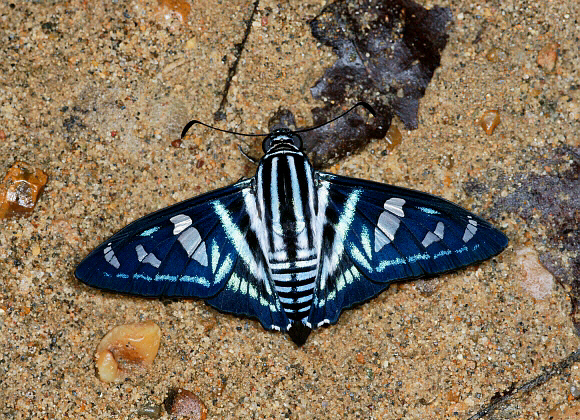
Introduction
The subfamily Pyrrhopyginae comprises 163 species, most of which are confined to the Neotropics, although a few occur in Mexico, and a single species Apyrrothrix araxes reaches Arizona.
The Pyrrhopyginae are characterised by having a massive muscular thorax and a conical abdomen with compressed segments. The wings of most species are black, often with a metallic blue sheen, and are swept back, half covering the hindwings when the butterflies settle.
Several genera, including Jemadia and Elbella have a pattern of hyaline windows on the forewings, and are marked with stripes and bands of metallic blue and white. Most of the 13 Jemadia and 22 Elbella species are very similar, but the shape and configuration of the hyaline windows and blue streaks is slightly different in each species.
Jemadia menechmus occurs in Colombia, Venezuela, Guyana, Surinam, Ecuador, Peru, Bolivia and south-west Brazil.
Habitats
This species inhabits primary rainforest at altitudes between about 200-800m.
Lifecycle
To be completed.
Adult behaviour
The butterflies are strongly associated with riparian habitats, and rarely seen away from rivers or streams. Males can be found either singly or aggregating with other Jemadia species in groups of 3 or 4, imbibing mineralised moisture on sandbanks. They tend to settle near the river’s edge, often in shaded or semi-shaded spots, typically half hidden in the shade of logs or boulders on the shore of shallow beaches.
Once settled and feeding they are very reluctant to move, and seem oblivious of human presence. Although they seem very lethargic, they are capable of taking to the air with incredible speed, flying in short rapid bursts, circling and weaving around tree tops so quickly that it is impossible to follow them by eye.
